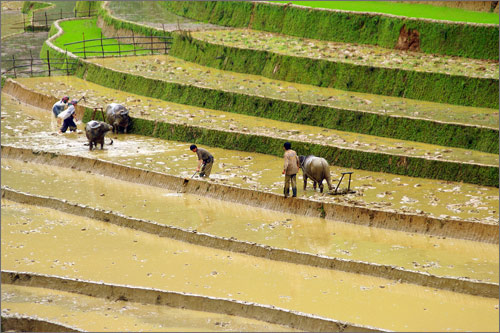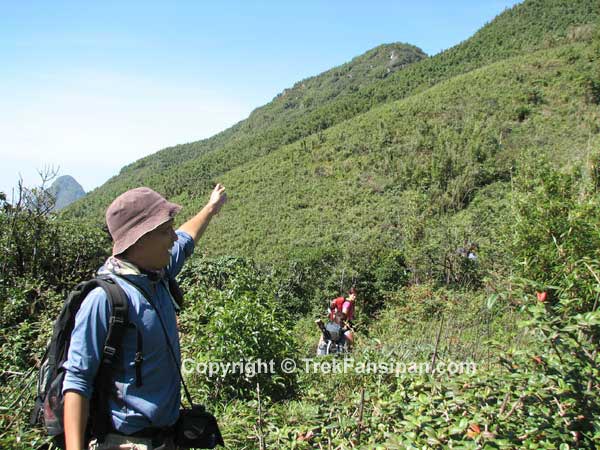Named after one of the brightest stars of Vietnamese poetry, Nguyen Du is a romantic Hanoi street with a number of street side cafe's, a lakeside view and milky flowers trees.
 |
LookAtVietnam - Named after one of the brightest stars of Vietnamese poetry, Nguyen Du is a romantic Hanoi street with a number of ca phe via he (street side cafés), a lakeside view and hoa sua (milky flowers) trees.
A man of culture
The Vietnamese poet Nguyen Du (1765-1820) was one of Vietnam’s greatest laureates. He successfully married the outstanding traditions of scholarly literature and folklore to create a body of work that still resonates today in Vietnam.
Born into a family of aristocrat scholars and mandarins under during the Le-Trinh Dynasty, Du witnessed the collapse and separation of his family and the deathknell of the feudal regime, a regime that Nguyen Du would not mourn. He considered himself a humanitarian who deeply sympathised with the fates of those less fortunate. As a writer he was a realist and he went on to denounce the inequality and cruelty of the feudal regime in his work.
In 1813, he accompanied an imperial embassy to the Chinese court, and while there he may have found the literary inspiration for his masterpiece, Truyen Kieu (The Story of Kieu), an epic poem which is widely considered to be the most significant work in Vietnamese literature. It also introduced chu Nom (Sino-Vietnamese script) as a genre and consecrated the Vietnamese language as a classical and poetical one of great delicacy and richness.
The street’s history
The 1,060-metre-long street stretches from Pho Hue to Le Duan Street criss- crossing Ba Trieu, Quang Trung, Tran Binh Trong and Yet Kieu streets. In French colonial times the street was divided into three different streets known as Voie 88 (later renamed Rue Riquier), Rue Halais (after a famous French commander) and Rue Dufourcq until 1945 when all three sections were renamed as Nguyen Du street.
The street is most picturesque by Thien Quang Lake (once called Halais Lake). Originally Thien Quang (which means Buddha’s light) was the name of a village located on the lake’s south-east area. There were a number of other villages around the lake (including Lien Thuy village in the northwest, Quang Hoa village in the southwest and Phap Hoa in the South) and three pagodas (Thien Quang, Phap Hoa and Quang Hoa), which still remain standing today on Tran Binh Trong street. The lake is a popular rendezvous for old people doing tai chi or aerobics in the mornings and for young amorous couples in the afternoons.
Street side cafe's and ice cream
Nguyen Du street still retains a sense of elegance and tranquility with ancient villas, newspaper stands and bonsai tree shops. You will also find a string of cafes on the sidewalks by Thien Quang lake. There are no flamboyant umbrellas, no tables spilling out onto the sidewalks, no fancy frappes, just small plastic stools inside and outside Cafe Lung (68 Nguyen Du) and Cafe Milano(84 Nguyen Du).
Further down the road past Quang trung street you will find the famous Café Mai (52 Nguyen Du), one of Hanoi’s most reputable local style coffeehouses.
Snowee Creamery (76 Nguyen Du)
A tasty Swedish ice cream is the perfect antidote to a hot and stuffy summer’s day in Hanoi. Despite being newly opened in Hanoi, Snowee has proved highly popular with a vast range of flavours and toppings as well as drinks on offer.
Restaurants Wild Lotus/ Da Lien restaurant 55A Nguyen Du
This classy restaurant’s Zen-design puts an emphasis on the traditional beauty of Vietnam’s much loved lotus flower. The pure beauty of the lotus graces the walls and ceilings, dry lotuses can be found in ceramic vases and lotus motifs can be found embroidered into curtains and on yellow lamps. But everyone peace and tranquility abound. The menu features sublime renditions of classic Vietnamese cuisine from all regions of the country.
Lau Nguyet (Lau ga ruou nep)
Ruou nep is mildly alcoholic drink made from glutinous rice that has been fermented with the aid of yeast and steamed in a banana leaf, which is also added to chicken hot pot (lau ga) in a restaurant called Lau Nguyet, just where Nguyen Du meets Hang Long street.
Korean Culture Centre 49 Nguyen Du
Established with the purpose of pushing cultural exchange between Vietnam and Korea, the centre hosts photographic and painting exhibition, films, concerts and music programmes, featuring Vietnamese and Korean artists.
French Connection, 74 Nguyen Du
This world famous brand has an outlet facing Thien Quang lake offering the official FCUK fashion-forward clothing range, which is sophisticated and affordable. FCUK has recently expanded its portfolio into exciting new areas including men’s and women’s toiletries, sunglasses and opticals, watches and shoes.
In spite of being present in Vietnam’s fashion market a few years ago, FCUK has proved popular with young Vietnamese women thanks to the basic promise of quality and affordability.





























































